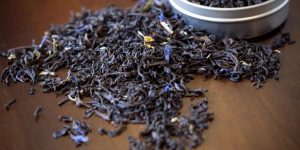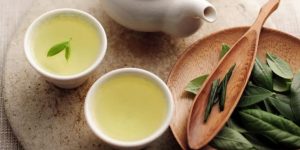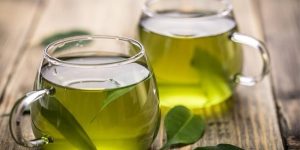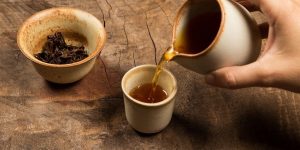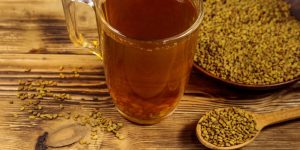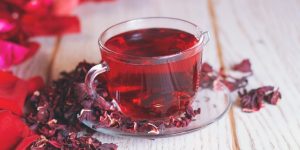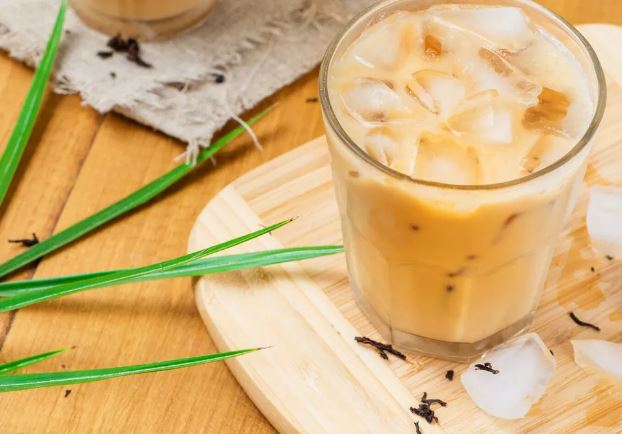
O ceylon tea is a popular type of black tea, also known as Sri Lankan tea. Served as iced or hot tea, it is a favorite drink of many tea drinkers for its health benefits.
Although Ceylon is known for its bold flavor, it can vary significantly in flavor depending on the type of tea and where in the country it is grown. Take the opportunity to discover its different versions.
Quick Facts
Origin: Sri Lanka
Alternative names: Sri Lankan tea
Temperature: 100°
Caffeine: 50-90 mg per cup

What is Ceylon Tea?
O ceylon tea (say-lawn) is a tea produced in the island nation of Sri Lanka, formerly known as Ceylon. Sri Lanka is small, but has a huge variation in altitude, climate and soil type.
Plant varieties and climate, therefore, the flavors and characteristics of the teas produced there vary greatly. Furthermore, despite regional nuances, a classic Ceylon flavor is generally considered bold, full and lively.
It has medium to full tannins and some notes of citrus fruits, chocolate or spices. Ceylon teas are made from the dried leaves of the tea plant, Camellia sinensis.
The leaves are often described as wire-like because they are left long and thin with a wire-like appearance.
In the world of tea, these leaves are very easy to recognize. Furthermore, most of the ceylon tea It is an orthodox tea, meaning it has been processed by hand, making a bright, lively tea.
Benefits of Ceylon Tea:
O ceylon tea It is known to have a long list of health benefits. Some key benefits include:
Weight loss
Drinking tea stimulates your metabolism, which can help increase energy and help your body burn fat.
Stimulate immune system
O ceylon tea It is rich in antioxidants, which can increase white blood cells, boost the immune system, and help the body fight harmful viruses and bacteria that cause disease.
Heart health
Studies have shown that consumption of black tea may help reduce blood pressure. Furthermore, the ceylon tea contains potassium, which relaxes tension in blood vessels and arteries.((https://journals.plos.org/plosone/article?id=10.1371/journal.pone.0103247))
Diabetes
To drink ceylon tea has been shown to reduce blood glucose levels. Additionally, by helping to regulate glucose and insulin levels in the body, Ceylon tea can help prevent the spikes and dips that can be dangerous for people with diabetes.
Skin
Collagen is important for skin elasticity. Some of the antioxidants identified in ceylon tea are linked to reducing collagen loss in the skin, preventing oxidative stress on surrounding cells.
Uses of Ceylon Tea
O ceylon tea It is typically consumed as a refreshing, freshly brewed, hot drink, or as an iced tea. Lemon, sweeteners or milk can be added to soften its strong flavor and reduce bitterness. Plus, because of its caffeine and peppy qualities, it makes a good morning or afternoon tea.
How to drink ceylon tea
The diversity of Ceylon teas leads to a wide variety of how you can enjoy them. Ceylon teas are a popular base for iced teas. They also make one of the nicest hot teas you will find.
This type of tea is the epitome of the term “self-drinker,” used to describe teas that don’t need enhancements because they are perfect on their own. You can also use it in milk tea, which is an ideal way to mellow the flavor.
To prepare the ceylon tea, fill a teapot and teacup halfway with hot water to preheat them, then pour in the water. Additionally, add about 1 teaspoon of leaves for every 8 ounces of water to the teapot.
Fill with boiling water, cover the pan and leave to infuse for 3 to 5 minutes. Once the leaves settle to the bottom of the teapot, swirl the tea to allow for proper extraction. The longer the tea steeps, the greater the caffeine content and strength of flavor.
Caffeine Content in Ceylon Tea
O ceylon tea contains caffeine, but the amount varies depending on the leaves used and how it is prepared. Additionally, tea bags generally contain more caffeine than whole leaves, and steeping time also affects the caffeine level.
An 8-ounce cup of black tea from Ceylon generally contains 50 to 90 milligrams of caffeine, depending on the concentration in which it is prepared. Ceylon green tea usually has about 35 milligrams per cup.
Buying and storing
When purchasing ceylon tea, buy loose sheets for optimal quality; alternatively, buy tea bags. Additionally, genuine Ceylon tea displays a unique lion logo on the packaging.
The logo is owned by the Sri Lankan Tea Board and is a registered trademark worldwide. Store tea in a clean, airtight container in a cool, dry place away from moisture, heat, light and pungent odors.
Types of Ceylon Tea
Although some Sri Lankan producers are expanding their offerings to include green tea and other types of tea, most Ceylon teas are black teas.
There are seven tea growing regions in Sri Lanka, and Ceylon teas are classified into three different altitudes: high (above 4,000 feet), medium (between 2,000 and 4,000 feet), and low (up to 2,000 feet).
Nuwara Eliya:
Nuwara Eliya is the highest altitude tea producing area in Sri Lanka. It is also located in the center of the island, west of Uva and north of Dimbula.
Its terroir produces teas with a delicate floral fragrance and a light, lively flavor. Additionally, Nuwara Eliya's high-altitude teas are exceptionally iced or served with lemon.
Grape:
It is a highly cultivated tea and perhaps the most famous tea growing region in Sri Lanka. Furthermore, it is located in central Sri Lanka, east of Nuwara Eliya and Dimbula.
The territory of Uva produces black tea with a sweet flavor and woody aroma that can handle a little milk. Additionally, some white teas are also produced in Uva.
Dimbula (or Dambulla):
Dimbula is a tea growing region in central Sri Lanka. It is the southernmost region of the three known regions. Furthermore, as it is a region with mountainous slopes, the terroir varies greatly with elevation. Some teas are full-bodied, while others are delicate, but most have a mild flavor.
Uda Pussellawa:
Uda Pussellawa is close to Nuwara Eliya, in a region that experiences heavy rainfall. Their tea is similar to Nuwara Eliya tea, but darker, with a pinkish hue and a stronger flavor.
Kandy:
Kandy is a mid-altitude district that produces medium teas, which vary in flavor depending on exposure to monsoon winds. Additionally, the tea is generally full-bodied, malty, and copper-toned.
Ruhuna and Sabaragamuwa:
Ruhuna and Sabaragamuwa are low-altitude regions that produce low-yield black teas with a full flavor, rich orange and red tones, with notes of honey, chocolate and caramel. Most teas grown in these regions are processed as orange pekoes and floral orange pekoes.
Side effects
Drink a lot ceylon tea or any drink with caffeine in large quantities can increase the chance of side effects such as headache, nervousness, tremors, irregular heartbeat or sleep problems. To reduce this risk, avoid drinking tea in large quantities and drink tea that is not too strong.((https://medlineplus.gov/caffeine.html))






